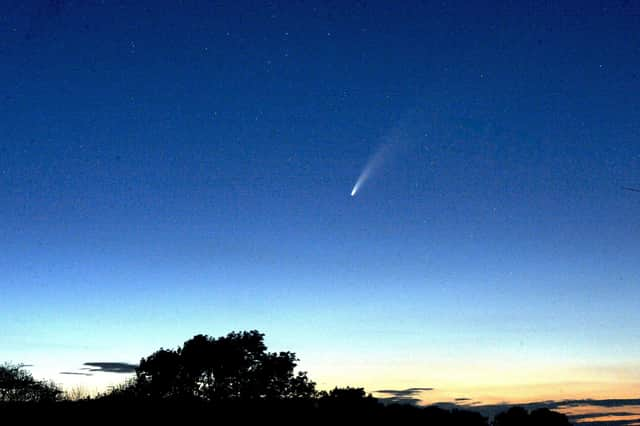How to photograph Comet Neowise from Peterborough


Comet Neowise was discovered by NASA in March by the NEOWISE space telescope and can be seen millions of miles away from Earth, thanks to its huge trail of dust and ice.
The comet is heading past Earth and will be near enough to allow people to spot it, with its closest approach expected on 23 July.
Advertisement
Hide AdAdvertisement
Hide AdEven at its closest distance, it will still be around 64 million miles, or 103 million kilometres, away.
Such a distance is around 400 times further than the moon, but it should still be visible even without using binoculars or a telescope to spot it.
The comet will continue to be visible throughout the entire month of July, giving stargazers plenty of opportunity to catch a glimpse.
Peterborough Telegraph photographer David Lowndes captured this stunning image of the comet, and gave tips on how to photograph it from the city.
Advertisement
Hide AdAdvertisement
Hide AdHe said: “To view and photograph Comet Neowise it is ideal to find some dark sky out of the city centre and away from light pollution. It is best seen about one and a half hours after sunset.
“Look for constellation Ursa Major (The Plough), below it and to the right at about 20 degrees above the horizon is the comet. It can be seen with the naked eye, but binoculars are better.
“My photograph was taken with a Nikon D4s, using a 135mm 2.8 lens and a tripod. Exposure was 4 seconds at F2.8 at 3200 ISO.”
Announcing its discovery, NASA said: “A comet has suddenly become visible to the unaided eye.
Advertisement
Hide AdAdvertisement
Hide Ad“Comet C/2020 F3 (NEOWISE) was discovered in late March and brightened as it reached its closest approach to the Sun, inside the orbit of Mercury, late last week.
“The interplanetary iceberg survived solar heating, so far, and is now becoming closer to the Earth as it starts its long trek back to the outer Solar System.
“As Comet NEOWISE became one of the few naked-eye comets of the 21st Century, word spread quickly, and the comet has already been photographed behind many famous sites and cities around the globe.”